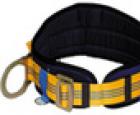Application of the Magnus effect and its amazing properties. Cyclones and anticyclones Flettner's wind ship
Flow direction. This is the result of the combined influence of such physical phenomena as the Bernoulli effect and the formation of a boundary layer in the medium around the streamlined object.
A rotating object creates a vortex motion in the environment around it. On one side of the object, the direction of the vortex coincides with the direction of the flow around it and, accordingly, the speed of movement of the medium on this side increases. On the other side of the object, the direction of the vortex is opposite to the direction of the flow, and the speed of the medium decreases. Due to this difference in speed, a pressure difference arises, generating a transverse force from that side of the rotating body on which the direction of rotation and the direction of flow are opposite, to the side on which these directions coincide. This phenomenon is often used in sports, see for example special shots: topspin, dry sheet in football or the Hop-Up system in airsoft.
The effect was first described by the German physicist Heinrich Magnus in 1853.
Formula for calculating force
Ideal liquid
Even if the fluid has no internal friction (viscosity), the effect of lift can be calculated.
Let the ball be in a flow of ideal fluid flowing onto it. Flow velocity at infinity (nearby it is, of course, distorted) u → ∞ (\displaystyle (\vec (u))_(\infty )). To simulate the rotation of the ball, we introduce velocity circulation Γ (\displaystyle \Gamma ) Around him. Based on Bernoulli's law, we can find that the total force acting on the ball in this case is equal to:
R → = − ρ Γ → × u → ∞ (\displaystyle (\vec (R))=-\rho (\vec (\Gamma ))\times (\vec (u))_(\infty )).It's clear that:
- the total force is perpendicular to the flow, that is, the resistance force of the flow of an ideal fluid on the ball is zero (D'Alembert's paradox)
- the force, depending on the relationship between the directions of circulation and the flow speed, is reduced to a lifting or lowering force.
Viscous liquid
The following equation describes the necessary quantities to calculate the lift created by the rotation of a ball in a real fluid.
F = 1 2 ρ V 2 A C l (\displaystyle (F)=(1 \over 2)(\rho )(V^(2)AC_(l))) F (\displaystyle F)- lifting force ρ (\displaystyle \rho )- liquid density. V (\displaystyle V)- speed of the ball relative to the medium A (\displaystyle A)- transverse area of the ball C l (\displaystyle (C_(l)))- lift coefficientThe lift coefficient can be determined from plots of experimental data using Reynolds number and rotation coefficient ((angular velocity*diameter)/(2*linear velocity)). For rotation coefficients between 0.5 and 4.5, the lift coefficient ranges from 0.2 to 0.6.
Everyone has seen how in football or tennis the ball flies along an incredible trajectory. Why is this happening? I don’t remember in the school curriculum that they told us about this and we always just called it “twisted”. But what force makes a flying ball describe zigzags?
Now we will find out all this...
This effect was discovered by the German physicist Heinrich Magnus in 1853. The essence of the phenomenon is that when the ball rotates, it creates a vortex of air around itself. On one side of the object, the direction of the vortex coincides with the direction of the flow around it and the speed of the medium on this side increases. On the other side of the object, the direction of the vortex is opposite to the direction of the flow, and the speed of the medium decreases. This difference in speed generates a lateral force that changes the flight path. The phenomenon is often used in sports, for example, special shots: top spin, dry sheet in football or the Hop-Up system in airsoft.
The Magnus effect is well illustrated in this video. A basketball thrown vertically down from a great height and given rotation changes its trajectory and flies horizontally for some time.
The Magnus effect was demonstrated at a dam in Australia. At first the basketball was simply thrown from her, flew almost straight down and landed at the intended point. Then the ball was thrown from the dam a second time, while slightly twisting it (by the way, football players often encounter the Magnus effect when serving “twisted” balls). In this case, the object behaved unusually. A video demonstrating the physical phenomenon was posted on YouTube, collecting more than 9 million views and almost 1.5 thousand comments in just a couple of days.
Rice. 1 1 — boundary layer
A cylinder moving translationally (non-rotating) with a relative speed V0 is flown around by a laminar flow, which is non-vortex (Fig. 1b).
If the cylinder rotates and simultaneously moves in translation, then the two flows surrounding it will overlap each other and create a resultant flow around it (Fig. 1c).
When the cylinder rotates, the liquid also begins to move. The motion in the boundary layer is vortex; it is composed of potential motion, on which rotation is superimposed. At the top of the cylinder the direction of flow coincides with the direction of rotation of the cylinder, and at the bottom it is opposite to it. Particles in the boundary layer at the top of the cylinder are accelerated by the flow, which prevents separation of the boundary layer. From below, the flow slows down the movement in the boundary layer, which promotes its separation. The detached parts of the boundary layer are carried away by the flow in the form of vortices. As a result, a circulation of speed occurs around the cylinder in the same direction in which the cylinder rotates. According to Bernoulli's law, the fluid pressure on the top of the cylinder will be less than on the bottom. This results in a vertical force called lift. When the direction of rotation of the cylinder is reversed, the lift force also changes direction to the opposite.
In the Magnus effect, the force Fpod is perpendicular to the flow velocity V0. To find the direction of this force, you need to rotate the vector relative to the speed V0 by 90° in the direction opposite to the rotation of the cylinder.
The Magnus effect can be observed in an experiment with a light cylinder rolling down an inclined plane.
Rolling cylinder diagram
After rolling down an inclined plane, the center of mass of the cylinder does not move along a parabola, as a material point would move, but along a curve that goes under the inclined plane.
If we replace the rotating cylinder with a vortex (rotating column of liquid) with intensity J=2Sw, then the Magnus force will be the same. Thus, a force perpendicular to the relative velocity of motion V0 and directed in the direction determined by the above vector rotation rule acts on the moving vortex from the surrounding fluid.
In the Magnus effect, the following are interconnected: the direction and speed of the flow, the direction and angular velocity, the direction and the resulting force. Accordingly, force can be measured and used, or flow and angular velocity can be measured.
The dependence of the result on the impact has the following form (Zhukovsky-Kutt formula):
where J is the intensity of movement around the cylinder;
r is the density of the liquid;
V0 is the relative flow velocity.
Restrictions on the manifestation of the physical effect: ensuring laminar flow of liquid (gas) over an object with a lifting force directed upward.
The effect was first described by the German physicist Heinrich Magnus in 1853.
He studied physics and chemistry for 6 years - first at the University of Berlin, then another year (1828) in Stockholm, in the laboratory of Jons Berzelius, and subsequently in Paris with Gay-Lussac and Tenard. In 1831, Magnus was invited as a lecturer in physics and technology at the University of Berlin, then he was a professor of physics until 1869. In 1840, Magnus was elected a member of the Berlin Academy, and from 1854 he was a corresponding member of the St. Petersburg Academy of Sciences.
Magnus worked tirelessly throughout his life on a wide variety of issues in physics and chemistry. While still a student (1825), he published his first work on the spontaneous combustion of metal powders, and in 1828 he discovered the platinum salt (PtCl 2NH3) named after him. In 1827-33 he was mainly engaged in chemistry, then work in the field of physics. Of these latter, the best known are studies on the absorption of gases by blood (1837-45), on the expansion of gases from heating (1841-44), on the elasticity of water vapor and aqueous solutions (1844-54), on thermoelectricity (1851), and electrolysis (1856) , induction of currents (1858-61), thermal conductivity of gases (1860), polarization of radiant heat (1866-68) and the question of the thermochromaticity of gases (since 1861).
Magnus is no less famous as a teacher; Most of the outstanding modern German physicists came from his laboratory, and some Russian scientists also worked in it.
sources
http://www.effects.ru/science/120/index.htm
http://naked-science.ru/article/video/video-effekt-magnusa-v-deistvi
https://ru.wikipedia.org/wiki/%D0%9C%D0%B0%D0%B3%D0%BD%D1%83%D1%81,_%D0%93%D0%B5%D0%BD %D1%80%D0%B8%D1%85_%D0%93%D1%83%D1%81%D1%82%D0%B0%D0%B2
Let's remember some other interesting effects in science: for example, and here, or. Let's also remember about and The original article is on the website InfoGlaz.rf Link to the article from which this copy was made -A turbosail is a rotor-type marine propulsion device that creates thrust from wind energy thanks to a physical phenomenon known as the Magnus effect.
A turbosail operates based on a physical process that occurs when a fluid or gas flows around a rotating cylindrical or round body, known as the Magnus effect. The phenomenon got its name from the name of the Prussian scientist Heinrich Magnus, who described it in 1853.
Let's imagine a ball or cylinder that rotates in a flow of gas or liquid washing them. In this case, the cylindrical body must rotate along its longitudinal axis. During this process, a force arises whose vector is perpendicular to the direction of flow. Why is this happening? On the side of the body where the direction of rotation and the flow vector coincide, the speed of the air or liquid medium increases, and the pressure, in accordance with Bernoulli's law, decreases. On the opposite side of the body, where the rotation and flow vectors are multidirectional, the speed of the medium decreases, as if slowed down, and the pressure increases. The pressure difference arising on opposite sides of a rotating body generates transverse force. In aerodynamics, it is known as the lifting force that keeps heavier-than-air craft in flight. In the case of rotor sails, this is a force with a vector perpendicular to the direction of the wind acting on a rotor-sail mounted vertically on the deck and rotating along the longitudinal axis.
Flettner rotating sails
The described physical phenomenon was used by the German engineer Anton Flettner when creating a new type of marine engine. Its rotor sail looked like rotating cylindrical wind power towers. In 1922, the inventor received a patent for his device, and in 1924, the first rotary ship in history, the converted schooner Bukau, left the stocks.
The Bukau turbosails were driven by electric motors. On the side where the rotor surface rotated towards the wind, in accordance with the Magnus effect, an area of increased pressure was created, and on the opposite side - a decreased one. As a result, a thrust arose, which moved the ship, subject to the presence of a side wind. Flettner placed flat plates on top of the rotor-cylinders for better orientation of the air flow around the cylinder. This made it possible to double the driving force. A spinning hollow metal cylinder-rotor that uses the Magnus effect to create lateral thrust was subsequently named after its creator.
During testing, Flettner's turbosails performed excellently. Unlike a conventional sailboat, a strong side wind only improved the performance of the experimental vessel. Two cylindrical rotors made it possible to better balance the ship. At the same time, by changing the direction of rotation of the rotors, it was possible to change the movement of the vessel forward or backward. Of course, the most advantageous wind direction for creating thrust was strictly perpendicular to the longitudinal axis of the vessel.

Turbosail from Cousteau
Sailboats were built in the 20th century, and are still being built in the 21st. Modern sails are made of lighter and stronger synthetic materials, and the sailing rig is quickly folded by electric motors, freeing people from physical work.
However, the idea of a fundamentally new system that uses wind energy to create ship thrust was in the air. It was picked up by the French explorer and inventor Jacques-Yves Cousteau. As an oceanographer, he was very impressed by the use of wind as a thrust - a free, renewable and absolutely environmentally friendly source of energy. In the early 1980s, he began work on creating such propulsors for modern ships. He took Flettner's turbosails as a basis, but significantly modernized the system, making it more complex, but at the same time increasing its efficiency.
What is the difference between a Cousteau turbosail and a Flettner propulsion system? Cousteau's design is a vertically mounted hollow metal tube that has an aerodynamic profile and operates on the same principle as an airplane wing. In cross section, the pipe has a drop-shaped or egg-shaped shape. On its sides there are air intake grilles through which air is pumped through a system of pumps. And then the Magnus effect comes into play. Air turbulence creates a pressure difference inside and outside the sail. A vacuum is created on one side of the pipe, and a seal is created on the other. As a result, a lateral force arises, which causes the ship to move. Essentially, a turbosail is a vertically mounted aerodynamic wing: on one side the air flows slower than on the other, creating a pressure difference and lateral thrust. A similar principle is used to create lift on an airplane. The turbosail is equipped with automatic sensors and is mounted on a rotating platform, which is controlled by a computer. The smart machine positions the rotor taking into account the wind and sets the air pressure in the system.
Cousteau first tested a prototype of his turbosail in 1981 on the catamaran Moulin à Vent while sailing across the Atlantic Ocean. During the trip, the catamaran was accompanied by a larger expedition ship for safety. The experimental turbosail provided thrust, but less than traditional sails and motors. In addition, by the end of the trip, due to metal fatigue, the welding seams burst under the pressure of the wind, and the structure fell into the water. However, the idea itself was confirmed, and Cousteau and his colleagues focused on developing a larger rotary vessel, the Halsion. It was launched in 1985. The turbosails on it are an addition to the aggregation of two diesel engines and several propellers and allow saving fuel consumption by a third. Even 20 years after the death of its creator, Alsion is still on the move and remains the flagship of the Cousteau flotilla.

Turbosail versus canvas wings
Even in comparison with the best modern sails, a turbosail-rotor provides 4 times the thrust coefficient. Unlike a sailboat, a strong side wind is not only not dangerous for a rotary ship, but is most beneficial for its progress. It moves well even with a headwind at an angle of 250. At the same time, a ship with traditional sails “loves” a tailwind most of all.
Conclusions and prospects
Now exact analogs of Flettner's sails are installed as auxiliary propulsors on the German cargo ship E-Ship-1. And their improved model is used on the yacht Alsion, owned by the Jacques-Yves Cousteau Foundation.
Thus, there are currently two types of propulsion systems for the Turbosail system. A conventional rotor sail, invented by Flettner at the beginning of the 20th century, and its modernized version by Jacques-Yves Cousteau. In the first model, the net force arises from the outside of the rotating cylinders; in the second, more complex version, electric pumps create a difference in air pressure inside a hollow pipe.
The first turbosail is capable of propelling the vessel only in crosswinds. It is for this reason that Flettner’s turbosails have not become widespread in global shipbuilding. The design feature of the Cousteau turbosail allows you to obtain driving force regardless of the direction of the wind. A vessel equipped with such propulsors can even sail against the wind, which is an undeniable advantage over both conventional sails and rotor sails. But, even despite these advantages, the Cousteau system was also not put into production.
This is not to say that attempts are not being made these days to bring Flettner's idea to life. There are a number of amateur projects. In 2010, the third ship in history, after the Bukau and Alsion, was built with rotor sails - a 130-meter German Ro-Lo class truck. The vessel's propulsion system consists of two pairs of rotating rotors and a couple of diesel engines in case of calm and to create additional traction. Rotor sails play the role of auxiliary engines: for a ship with a displacement of 10.5 thousand tons, four wind power towers on deck are not enough. However, these devices can save up to 40% of fuel on each flight.
But the Cousteau system was unfairly consigned to oblivion, although the economic feasibility of the project was proven. Today, Alsion is the only full-fledged ship with this type of propulsion. It seems unclear why the system is not used for commercial purposes, in particular on cargo ships, since it allows saving up to 30% of diesel fuel, i.e. money.
Flow direction. This is the result of the combined influence of such physical phenomena as the Bernoulli effect and the formation of a boundary layer in the medium around the streamlined object.
A rotating object creates a vortex motion in the environment around it. On one side of the object, the direction of the vortex coincides with the direction of the flow around it and, accordingly, the speed of movement of the medium on this side increases. On the other side of the object, the direction of the vortex is opposite to the direction of the flow, and the speed of the medium decreases. Due to this difference in speed, a pressure difference arises, generating a transverse force from that side of the rotating body on which the direction of rotation and the direction of flow are opposite, to the side on which these directions coincide. This phenomenon is often used in sports, see for example special shots: topspin, dry sheet in football or the Hop-Up system in airsoft.
The effect was first described by the German physicist Heinrich Magnus in 1853.
Formula for calculating force
Ideal liquid
Even if the fluid has no internal friction (viscosity), the effect of lift can be calculated.
Let the ball be in a flow of ideal fluid flowing onto it. Flow velocity at infinity (nearby it is, of course, distorted) . To simulate the rotation of the ball, we introduce velocity circulation Around him. Based on Bernoulli's law, we can find that the total force acting on the ball in this case is equal to:
.
It's clear that:
- the total force is perpendicular to the flow, that is, the resistance force of the flow of an ideal fluid on the ball is zero (D'Alembert's paradox)
- the force, depending on the relationship between the directions of circulation and the flow speed, is reduced to a lifting or lowering force.
Viscous liquid
The following equation describes the necessary quantities to calculate the lift created by the rotation of a ball in a real fluid.
- lifting force - liquid density. - speed of the ball relative to the medium - transverse area of the ball - lift coefficient ( English)
The lift coefficient can be determined from plots of experimental data using Reynolds number and rotation coefficient ((angular velocity*diameter)/(2*linear velocity)). For rotation coefficients between 0.5 and 4.5, the lift coefficient ranges from 0.2 to 0.6.
Application
Wind generators
The “air rotor” wind generator is a tethered device that is lifted with helium to a height of 120 to 300 meters)
Turbosails on ships
Since the 1980s, the Cousteau Halcion has been in operation with a complex turbosail using the Magnus effect.
Since 2010, the E-Ship 1 cargo ship with simpler rotor sails has been in operation Anton Flettner
Write a review about the article "Magnus Effect"
Notes
Literature
- L. Prandtl"The Magnus Effect and the Wind Ship." (magazine "Advances in Physical Sciences", issue 1-2. 1925)
- L. Prandtl. On the movement of fluid with very little friction. - 1905.
Links
- //elementy.ru
- // technicamolodezhi.ru
Excerpt describing the Magnus Effect
“Well, I’ve finally done everything over, now I’ll rest,” the prince thought and allowed Tikhon to undress himself.Frowning in annoyance from the efforts that had to be made to take off his caftan and trousers, the prince undressed, sank heavily onto the bed and seemed to be lost in thought, looking contemptuously at his yellow, withered legs. He didn’t think, but he hesitated in front of the difficulty ahead of him to lift those legs and move on the bed. “Oh, how hard! Oh, if only this work would end quickly, quickly, and you would let me go! - he thought. He pursed his lips and made this effort for the twentieth time and lay down. But as soon as he lay down, suddenly the whole bed moved evenly under him back and forth, as if breathing heavily and pushing. This happened to him almost every night. He opened his eyes that had closed.
- No peace, damned ones! - he growled with anger at someone. “Yes, yes, there was something else important, I saved something very important for myself in bed at night. Valves? No, that's what he said. No, there was something in the living room. Princess Marya was lying about something. Desalle—that fool—was saying something. There’s something in my pocket, I don’t remember.”
- Quiet! What did they talk about at dinner?
- About Prince Mikhail...
- Shut up, shut up. – The prince slammed his hand on the table. - Yes! I know, a letter from Prince Andrei. Princess Marya was reading. Desalles said something about Vitebsk. Now I'll read it.
He ordered the letter to be taken out of his pocket and a table with lemonade and a whitish candle to be moved to the bed, and, putting on his glasses, he began to read. It was only here in the silence of the night, in the faint light from under the green cap, that he, having read the letter, for the first time, for a moment, understood its meaning.
“The French are in Vitebsk, after four crossings they can be at Smolensk; maybe they’re already there.”
- Quiet! - Tikhon jumped up. - No, no, no, no! - he shouted.
He hid the letter under the candlestick and closed his eyes. And he imagined the Danube, a bright afternoon, reeds, a Russian camp, and he enters, he, a young general, without one wrinkle on his face, cheerful, cheerful, ruddy, into Potemkin’s painted tent, and a burning feeling of envy for his favorite, just as strong, as then, worries him. And he remembers all the words that were said then at his first Meeting with Potemkin. And he imagines a short, fat woman with yellowness in her fat face - Mother Empress, her smiles, words when she greeted him for the first time, and he remembers her own face on the hearse and that clash with Zubov, which was then with her coffin for the right to approach her hand.
“Oh, quickly, quickly return to that time, and so that everything now ends as quickly as possible, as quickly as possible, so that they leave me alone!”
Bald Mountains, the estate of Prince Nikolai Andreich Bolkonsky, was located sixty versts from Smolensk, behind it, and three versts from the Moscow road.
On the same evening, as the prince gave orders to Alpatych, Desalles, having demanded a meeting with Princess Marya, informed her that since the prince was not entirely healthy and was not taking any measures for his safety, and from Prince Andrei’s letter it was clear that he was staying in Bald Mountains If it is unsafe, he respectfully advises her to write a letter with Alpatych to the head of the province in Smolensk with a request to notify her about the state of affairs and the extent of the danger to which Bald Mountains are exposed. Desalle wrote a letter to the governor for Princess Marya, which she signed, and this letter was given to Alpatych with the order to submit it to the governor and, in case of danger, to return as soon as possible.
Having received all the orders, Alpatych, accompanied by his family, in a white feather hat (a princely gift), with a stick, just like the prince, went out to sit in a leather tent, laid by three well-fed Savras.
The bell was tied up and the bells were covered with pieces of paper. The prince did not allow anyone to ride in Bald Mountains with a bell. But Alpatych loved bells and bells on a long journey. Alpatych's courtiers, a zemstvo, a clerk, a cook - black, white, two old women, a Cossack boy, coachmen and various servants saw him off.
A rotating object creates a vortex motion in the environment around it. On one side of the object, the direction of the vortex coincides with the direction of the flow around it and, accordingly, the speed of movement of the medium on this side increases. On the other side of the object, the direction of the vortex is opposite to the direction of the flow, and the speed of the medium decreases. Due to this difference in speed, a pressure difference arises, generating a transverse force from that side of the rotating body on which the direction of rotation and the direction of flow are opposite, to the side on which these directions coincide. This phenomenon is often used in sports, see, for example, special shots: top spin, dry sheet in football.
The effect was first described by the German physicist Heinrich Magnus in 1853.
Formula for calculating force
Ideal liquid
Even if the fluid has no internal friction (viscosity), the effect of lift can be calculated.
Let the ball be in a flow of ideal fluid flowing onto it. The flow speed is at infinity (nearby it is of course distorted). To simulate the rotation of a ball, we introduce a circulation of speed around it. Based on Bernoulli's law, we can find that the total force acting on the ball in this case is equal to:
.It's clear that:
- the total force is perpendicular to the flow, that is, the resistance force of the flow of an ideal fluid on the ball is zero (D'Alembert's paradox)
- the force, depending on the relationship between the directions of circulation and the flow speed, is reduced to a lifting or lowering force.
Viscous liquid
The following equation describes the necessary quantities to calculate the lift created by the rotation of a ball in a real fluid.
F- lifting force - liquid density. V- ball speed A- transverse area of the ball Cl- lift coefficient ( English)The lift coefficient can be determined from plots of experimental data using Reynolds number and rotation coefficient ((angular velocity*diameter)/(2*linear velocity)). For rotation coefficients between 0.5 and 4.5, the lift coefficient ranges from 0.2 to 0.6.
Application
Links
- Why does the ball move in "impossible" trajectories in some sports? //elementy.ru
- Physics of football // technicamolodezhi.ru
Literature
- L. Prandtl"The Magnus Effect and the Wind Ship." (magazine "Advances in Physical Sciences", issue 1-2. 1925)
- L. Prandtl On the movement of fluid with very little friction. - 1905.
Notes
Wikimedia Foundation. 2010.
See what the “Magnus Effect” is in other dictionaries:
Magnus effect- Magnuso reiškinys statusas T sritis fizika atitikmenys: engl. Magnus effect vok. Magnus Effect, m rus. Magnus effect, m; phenomenon of Magnus, n pranc. effet Magnus, m … Fizikos terminų žodynas
The Magnus effect when acting on a rotating ball The Magnus effect is a physical phenomenon that occurs when a flow of liquid or gas flows around a rotating body. A force is generated acting on the body and directed perpendicular to the direction of flow ... Wikipedia
Magnus effect- Magnus effect. MAGNUS EFFECT, the occurrence of a transverse force Y acting on a body rotating in a flow of liquid or gas flowing around it; always directed from that side of the rotating body on which the direction of rotation and the direction of flow... ... Illustrated Encyclopedic Dictionary
Magnus effect Encyclopedia "Aviation"
Magnus effect- Magnus effect. Magnus effect (named after the German scientist G. G. Magnus, G. G. Magnus) the occurrence of a transverse force when a uniform flow of liquid or gas flows around a rotating body. This force is directed towards that side of the rotating body... Encyclopedia "Aviation"
The occurrence of a transverse force Y acting on a body rotating in a flow of liquid or gas flowing around it; Y is directed in the direction where the direction of the flow velocity υ and the direction of rotation of the body coincide. Discovered by G. G. Magnus in 1852. * * *… … encyclopedic Dictionary
The occurrence of a transverse force acting on a body rotating in a flow of liquid (gas) impinging on it; open scientist G. G. Magnus (N. G. Magnus) in 1852. For example, if a rotating infinitely long circular cylinder flows around an irrotational ... Physical encyclopedia
- (named after the German scientist G. G. Magnus, G. G. Magnus) the occurrence of a transverse force when a uniform flow of liquid or gas flows around a rotating body. This force is directed to the side of the rotating body on which the directions of rotation and... ... Encyclopedia of technology
The occurrence of a transverse force Y acting on a body rotating in a flow of liquid or gas flowing around it; Y is directed in the direction where the flow velocity v and the rotation of the body coincide. Discovered by G. G. Magnus in 1852... Big Encyclopedic Dictionary
A force acting on a cylindrical body (rotor) when it rotates in a moving liquid or gas (for example, in air with wind) and arising due to a pressure difference. This force is perpendicular to the direction of movement of the medium (in our example to... ... Marine Dictionary








 What is compression clothing
What is compression clothing Cyclones and anticyclones Flettner's wind ship
Cyclones and anticyclones Flettner's wind ship Fastest man in the world
Fastest man in the world Descenders for industrial mountaineering Unicender - created by the Anglo-American company Morgan&Thompson
Descenders for industrial mountaineering Unicender - created by the Anglo-American company Morgan&Thompson